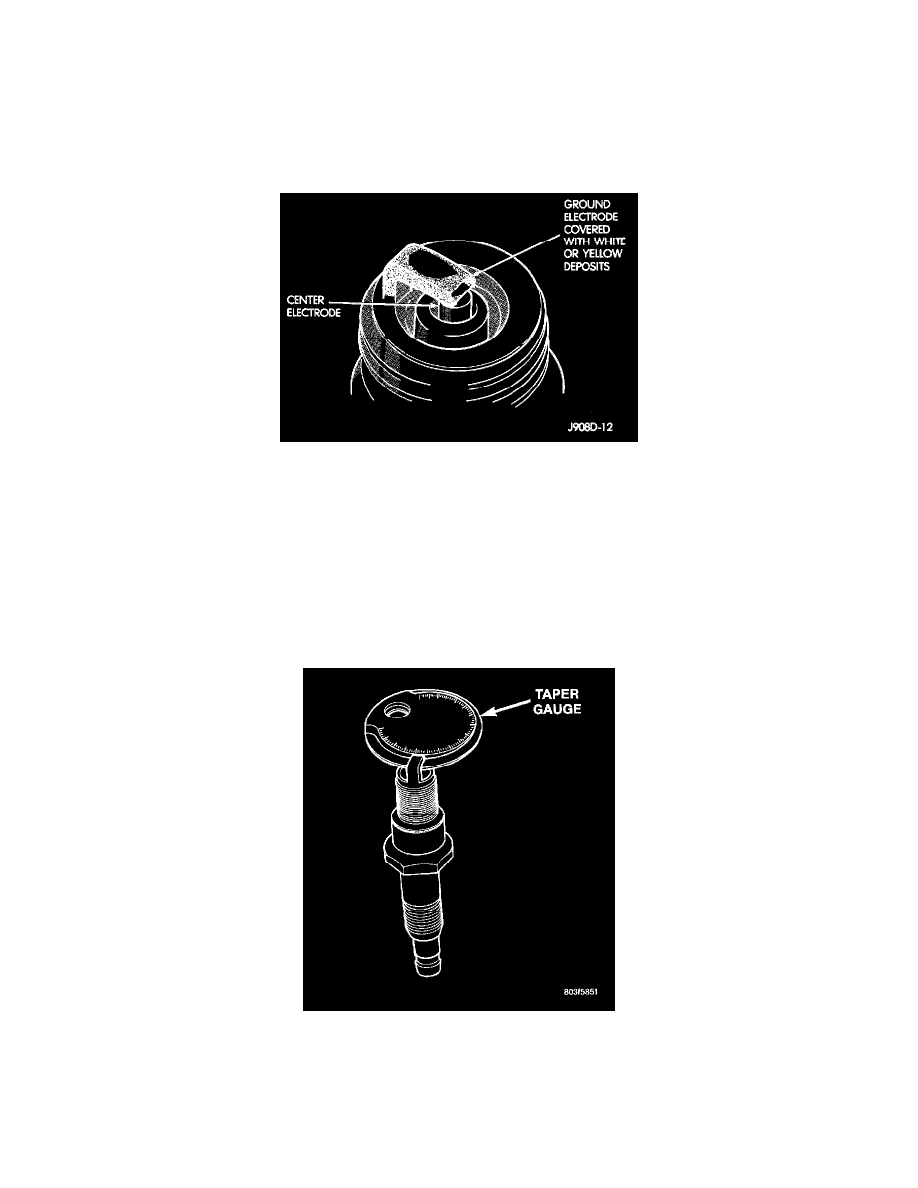Prowler V6-3.5L VIN G (1999)

Spark plugs are designed to operate within a specific temperature range, called spark plug heat range. Variations in thickness and length of the
center electrode and porcelain insulator change how fast the plug can dissipate heat and determine the plugs heat range.
Determine if the spark plugs are the correct type, as specified on the VECI label, or if other operating conditions are causing engine overheating.
Scavenger Deposits
SCAVENGER DEPOSITS
Scavenger Deposits
Fuel scavenger deposits may be either white or yellow. They may appear to be harmful, but are a normal condition caused by chemical additives in
certain fuels. These additives are designed to change the chemical nature of deposits and decrease spark plug misfire tendencies. Notice that
accumulation on the ground electrode and shell area may be heavy but the deposits are easily removed using standard procedures. Spark plugs
with scavenger deposits can be considered normal in condition, cleaned and reused.
Spark Plug Gap Measurement
SPARK PLUG GAP MEASUREMENT
Caution: The platinum pads can be damaged during the measurement of checking the gap if extreme care is not used.
Setting Spark Plug Electrode Gap
^
USE ONLY A TAPER GAP GAUGE.
^
Never force the gap gauge through the platinum pads. Only apply enough force until resistance is felt.
^
Never use a wire brush or spark plug cleaner machine to clean platinum spark plugs.
